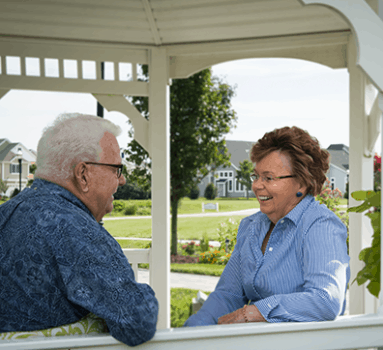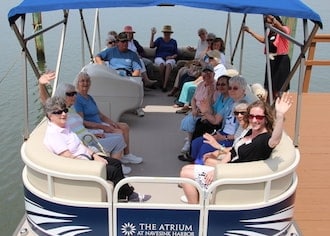What Is Nordic Walking? — and How Can It Benefit You?
May 23, 2024
Walking is a great way to get a workout in while enjoying a bit of fresh air and sunshine, but it’s not always easy to do frequently when back or knee pain gets in the way — and that’s where Nordic walking can help.
Nordic walking uses specially designed poles to take pressure off of the legs and back, allowing you to walk faster and further while gaining upper body and core strength and improving posture.
“For people with joint injuries in their lower bodies or lower back, trekking poles can help absorb some of the landing impact with each step, particularly when going downhill,” explained exercise physiologist and certified Nordic walking instructor Martica Heaner in an article for the Arthritis Foundation. “The poles help keep the body upright and symmetrical, improving balance.”
All of these things make Nordic walking an ideal exercise for seniors — and it’s easy to get started.
A Brief History of Nordic Exercise
Scandinavian hikers have long used regular ski poles to help with balance, especially on uneven terrain or when walking downhill.
In 1996, Tuomo Jantunen recognized that walking with poles could be used more widely to help more people. As the director of the Finnish Central Association for Recreational Sports and Outdoor Activities, he had both the experience and the team to take Nordic walking a step further. He enlisted the help of a Finnish company called Excel and began to work on developing the perfect walking poles.
After designing more than two dozen prototypes, Jantunen and his team released the first Nordic walking poles in 1997.
How Are Nordic Walking Poles Different From Ski Poles?
Nordic walking poles are different from ordinary ski poles in the following four ways:
- The poles are shorter than regular ski poles to compensate for the shorter stride of a user without skis.
- The “feet” of the poles have a forward angle.
- The poles have straps that allow for a more relaxed grip.
- The poles come with a rubber attachment that can be put on for walking on sidewalks and asphalt paths.
Nordic Walking Basics
Nordic walking is just like regular walking, except with special poles and a few slight modifications. Here are a few things to keep in mind.
- Lean slightly forward, keeping shoulders down and relaxed.
- Begin each step with the heel touching the ground and rolling forward to the ball and toe area.
- Take longer strides than usual.
- Keep a light grip on the poles.
Interested in seeing Nordic walking in action? Check out this two-and-a-half minute video, produced by the AARP, which nicely illustrates the proper technique.
Finding Nordic Walking Poles
While you can spend anywhere from $20 to more than $200 on Nordic walking poles, $50 is generally considered a good starting point for quality poles. There are two basic questions to answer when selecting poles: Do you want adjustable poles and what material do you want your poles to be made of?
The nice thing about adjustable poles is that they are collapsible, which makes it easy to stash them in a backpack or suitcase. (Here’s a nice pair to check out by Montem.) While critics of adjustable poles claim they are not as durable as one-piece models, there are many highly rated adjustable models.
Because they are not adjustable, one-piece walking poles — like these by industry pioneer Excel — are purchased based on your height. Check out this helpful guide by the Nordic Academy for more detailed information on how to select the right poles for your height. Note that some experts suggest that beginners use poles that are two inches shorter than the recommended length, which makes for less resistance.
Now for your second decision: poles made of aluminum or carbon fiber? Aluminum poles are heavier and more rigid, which means less give and more vibration felt in the arms and upper body. Carbon fiber poles are lighter and more flexible, which makes them more durable and also more comfortable for some. Carbon fiber poles are generally more expensive than aluminum.
The Benefits of Nordic Walking
Nordic walking is quickly becoming known as a great exercise for seniors because it enables those with joint or balance issues to feel more supported and walk further. Nordic walking turns walking into a full-body workout because it engages the core and gets arms in on the action.
“When you walk without poles, you activate muscles below the waist. When you add Nordic poles, you activate all of the muscles of the upper body as well,” explained cardiologist Aaron Baggish in an article for Harvard Health Publishing. “You’re engaging 80% to 90% of your muscles, as opposed to 50%, providing a substantial calorie-burning benefit.”
Redefining Wellness at The Atrium at Navesink Harbor
Wellness is a way of life at The Atrium at Navesink Harbor thanks to our award-winning LivWell program. In fact, we recently won the International Council on Active Aging’s NuStep Beacon Award, which recognized The Atrium at Navesink Harbor as one of the top 25 “Best in Wellness” senior living communities in North America. Use this quick form to schedule a visit and see firsthand what life on the water is like in Red Bank, New Jersey.




